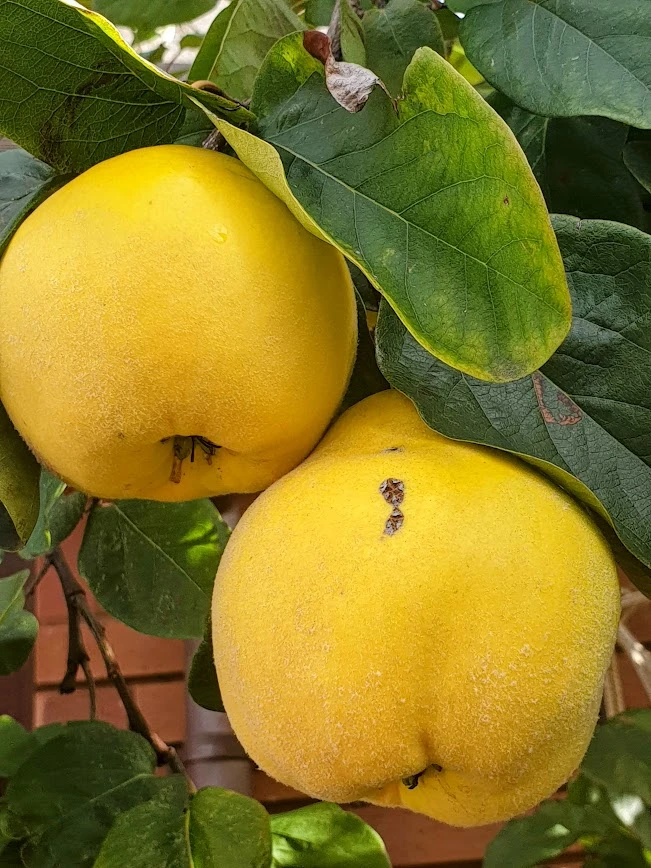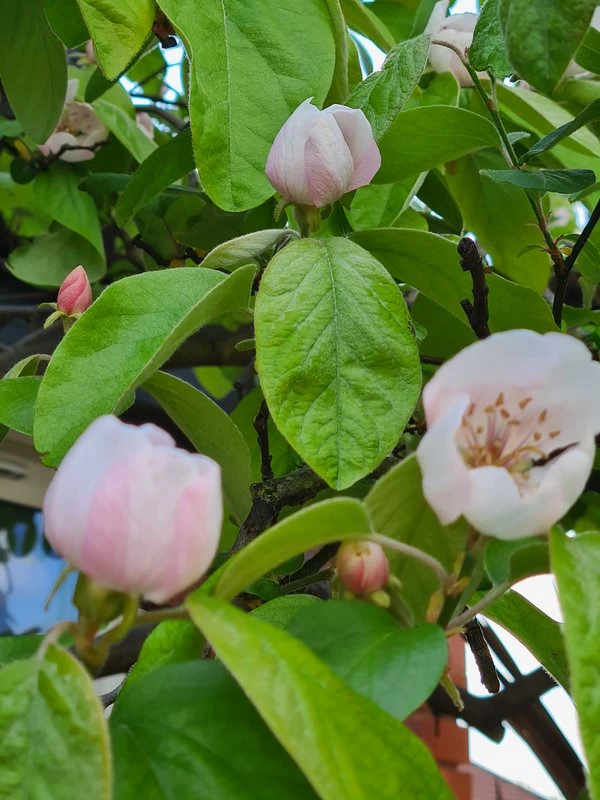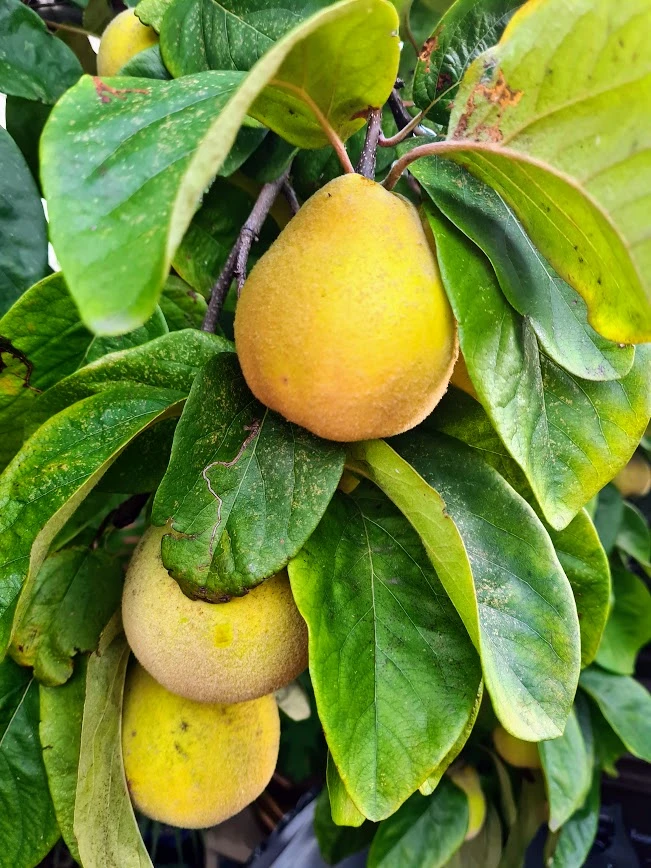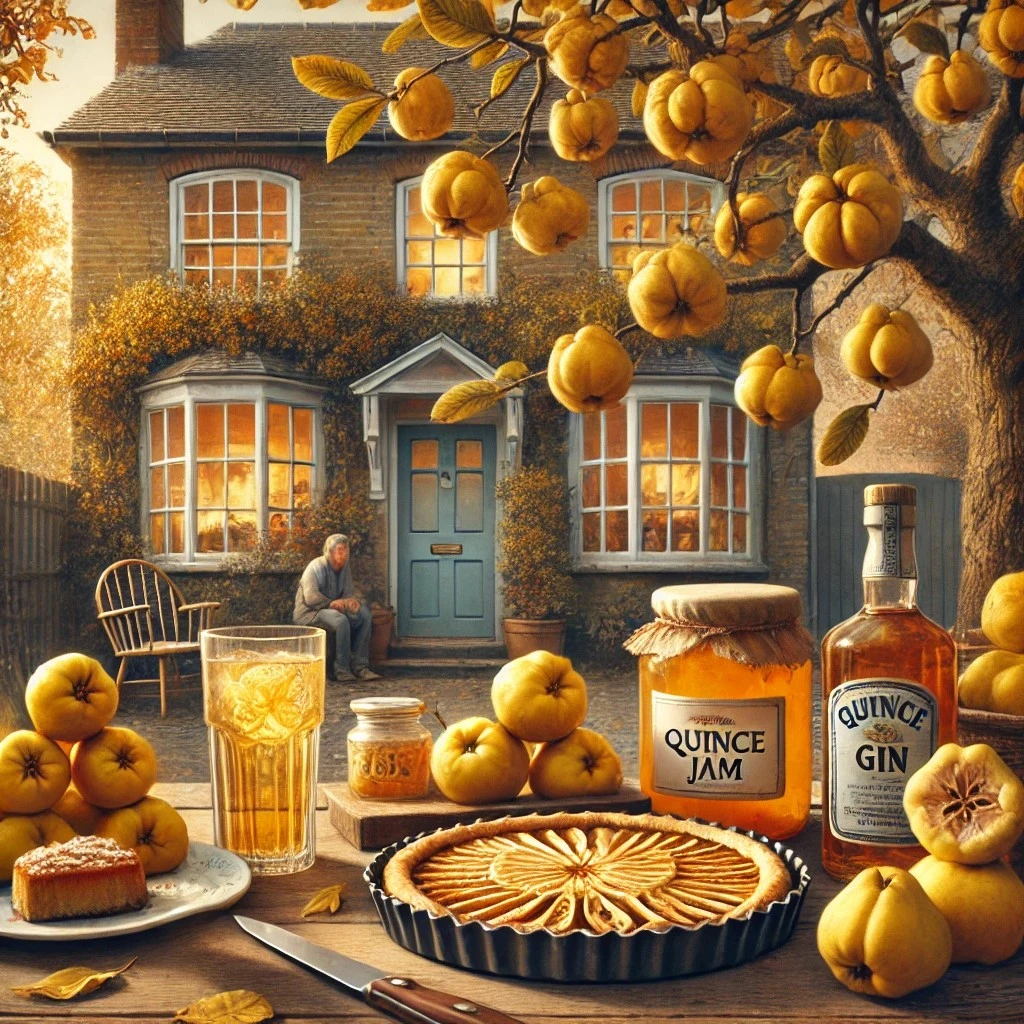Welcome to my blog, where language and life’s little joys often intertwine in unexpected ways. Today, I want to talk about something close to my heart (and home in south-west London): our quince tree. Standing proud in front of our house, this tree has become quite the conversation starter each autumn. Every year, without fail, people knock on our door, curious about the golden fruits it bears. “What fruit is this?” they ask, intrigued by the almost alien appearance of the quinces. It is a fruit that baffles many at first glance, but let me tell you, it is a treasure of flavour if you know what to do with it!

Golden quinces ripening on our tree. Photo by Danni Howe
The Beauty of the Quince: Childhood Memories and the Art of Translation
First things first—if you have ever tried to take a bite out of a raw quince, you will understand why it is not as straightforward as an apple. Tough and a bit too sharp for most palates when fresh off the tree, the quince requires a little culinary magic to truly shine.
For me, quinces are more than just a seasonal treat—they are tied to fond childhood memories from my time in Bulgaria. I remember the trees, much like the one outside our home now, heavy with fruit that would soon be transformed into jams and compotes, and once picked, filling the room with their distinctive, long-lasting aroma. The scent of cooking quinces in our kitchen brings me right back to those moments of warmth and family love. As a child, I knew my nan’s quince jam was unmatched, and despite never tasting anyone else's, I still believe it. She also baked quinces, halved and sugar-coated, allowing them to caramelise to perfection in the oven, filling the kitchen with the most divine aroma.

Cosy autumn kitchen with quince-inspired treats, capturing family traditions and warm memories. The image is AI-generated by Danni Howe.
You might wonder how this relates to translation, particularly from Bulgarian to English. Like quince, translation is about transformation—turning something raw and unfamiliar into something refined and accessible. Just as you would not offer a raw quince to enjoy, words need careful handling to preserve their essence, considering both cultures. It is an art, much like my nan’s jam recipe, passed down and adapted over time.
From Quince to Queens: The Elocution Mishap
Although quinces are well-known to most Bulgarians, many still ask me how to say it in English. I tell them and even throw in a little mnemonic about "queens" to help them remember. But there was one moment that would have made my English elocution tutor roll his eyes! At that time, I had recently discovered quince gin, and it became my new favourite flavour. While visiting the Midlands, we went to the hotel bar, and I confidently asked the barman for a quince gin. His ears, clearly unaccustomed to foreign accents, led him to say they did not have it. I insisted they did, having enjoyed it the night before. Eventually, he "realised" what I wanted and returned proudly with a bottle of Queen’s gin, specially crafted for the Jubilee of Queen Elizabeth! Safe to say, I did not make my tutor proud that day!

Beautiful quince blossoms, a sign of spring and a promise of the delicious fruit to come. Photo by Danni Howe
Turning Quince into Culinary Magic (Family Favourites)
Here are some of our family favourites that transform this odd-looking fruit into pure deliciousness:
- My nan’s quince jam - a nostalgic treat that pairs beautifully with a slice of fresh bread or cheese.
- My mum’s and nan's baked quince - a simple yet satisfying way that brings out the fruit’s full flavour.
- My own quince Tart Tatinn - often combined with apples for a perfect balance of sweetness and tang. It's a twist on the classic, but oh, so good.
- My own quince crumble - combining the fruit’s tartness with a buttery, crunchy topping for a cosy autumn dessert.
- My own quince duck sauce - a delicacy that adds depth and sweetness to savoury dishes.
- My own quince ice cream - I probably shouldn't mention this one because it was a bit of a failure.
- And, for the adults only, quince gin—a fragrant, autumnal twist on a classic spirit. Trust me, it’s a must-try!
The Art of Transformation: From Quinces to Words
So, next time you pass by a quince tree or stumble upon a translation challenge, think of the journey each takes—from its raw, unrefined state to something filled with character and meaning. Both require care, attention to detail, and a deep appreciation for the process. And, much like a perfectly baked quince or a well-crafted translation, the result is always worth it.
As autumn settles in and the quinces ripen on our tree, we are ready once again for those curious knocks at the door. And whether they are asking about the fruit or the art of translation, I am here to help.

Quinces hanging on the tree, slowly ripening into their golden hue. Photo by Danni Howe
About The Author
Danni Howe is an experienced content creator and translator, offering Bulgarian-English translation services focusing on legal, medical, and economic fields.
For inquiries, collaborations, or content writing services, visit TRANSLA Translation Services.




